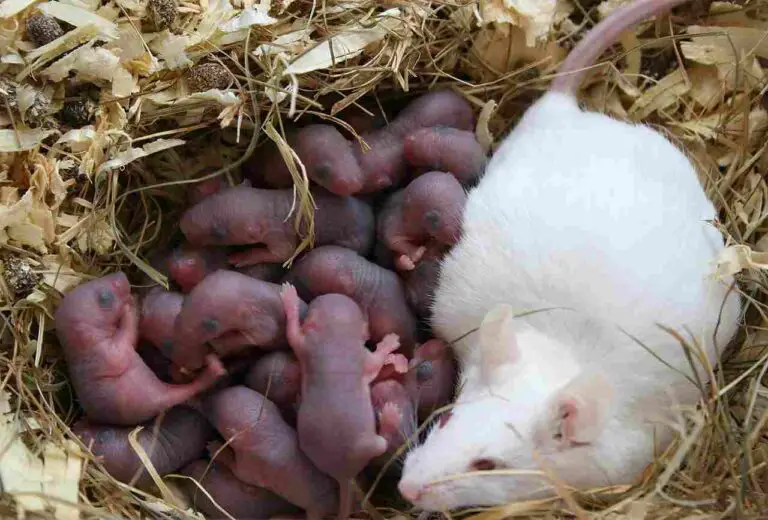17 Main Types and Uses of Bioremediation Explained
The main types of bioremediation are; in-situ, ex-situ, intrinsic, extrinsic, microbial bioremediation, phytoremediation and mycoremediation. Uses of bioremediation are; oil spill clean up, heavy metal remediation, mine site restoration, agricultural land rehabilitation, air quality improvement, municipal wastewater treatment, industrial effluent treatment and general environmental detoxification.
Bioremediation types are categorized based on tools, situational conditions, and methodology involved in the remediation process.
This article discusses the types of bioremediation, as follows;
1). In-Situ Bioremediation (as one of the Main Types of Bioremediation)
In-situ (or in situ) bioremediation is a type of biological remediation that is carried out on the site where degradation has occurred, without any form of removal or transport of degraded media from the site [3].
The significance of in situ bioremediation is therefore based on location, so that it is characterized mainly based on where remediation occurs.
In situ bioremediation is done by either natural or induced site restoration; where natural restoration occurs in the absence of any significant human intervention, and induced restoration is heavily dependent on human efforts to facilitate the treatment process.
Where natural restoration is used for in situ bioremediation, it can otherwise be referred to as intrinsic bioremediation, which is yet another type of bioremediation that usually proceeds in the absence of human intervention.
In situ bioremediation is effective for various types of degradation, including cases involving desertification, soil leaching, and pollution. It can also be used to treat different environmental media, including water and soil [11].
However, in situ bioremediation is most recommendable for cases where the complexity and severity of degradation are such as can be reversed effectively without any need for excavation or dredging and removal.
It is generally not recommendable to implement in situ bioremediation where there is extremely-high mobility and spread of pollutants, or where the degradation is highly-complex and affects multiple aspects of the ecosystem.
Bioremediation techniques used for in situ remediation include biostimulation and bioaugumentation; which are used to facilitate microbial activity and increase the size of microbe populations, respectively.
Other applicable techniques are bioventing, biosparging, and biofiltration.
There is no general preference or choice as to which is better between in situ and ex situ remediation approaches, since the selection of approach depends on the specific conditions and needs of the site.
However, in situ bioremediation is better in terms of being cost-effective and simple; while ex situ bioremediation is more suitable where there is significant complexity and/or severity of degradation.
Microorganisms are the primary tools used for in situ bioremediation in most cases.
2). Ex-Situ Bioremediation
Ex-situ (or ex situ) bioremediation is the act and process of treating degraded materials using biological organisms and methods, after they have been removed or isolated from the point of degradation [2].
It may be categorized into microbial and phytological types based on the specific tools used, and examples of bioremediation under ex situ conditions can be observed in wastewater treatment, and restoration of soils affected by severe oil spill.
One of the advantages of ex situ bioremediation is its versatility, which allows it to be effective for treatment of sludge, soil, groundwater, and nearly all forms of industrial waste.
However, because it involves excavation or dredging to remove the contaminated media from their natural environment, ex situ bioremediation can be much more expensive than in situ remediation.
This is a challenge as it may deter the use of ex situ approach even in cases where it is the more suitable approach.
Also, ex situ bioremediation involves more complexity and technicality, as well as more equipment and maintenance.
This can be predicted when we consider the use of bioreactors to hold and treat the degraded materials, and the need to hold these materials and treat them under optimal, controlled conditions.
Ex situ bioremediation is recommendable under some conditions; such as high pollutant mobility, multimedia degradation, and need for regulation of physicochemical parameters during treatment.
It may be facilitated by applying any of various tools and techniques, including landfilling and composting.
3). Intrinsic Bioremediation (as one of the Main Types of Bioremediation)
Intrinsic bioremediation is the process whereby degraded media are restored through the activities of natural microbial populations, without any significant human intervention [9].
Another way to describe intrinsic bioremediation is by calling it a 'non-engineered' process. This is because it differs from engineered bioremediation which involves human efforts to facilitate the restoration process.
Intrinsic bioremediation is usually a result of natural recycling of nutrients, bioenergy and biomass, which is what sustains the energy pyramid of both micro and macros ecosystems like soils, marshes, forests and grasslands.
The occurrence of intrinsic bioremediation is most common in subsurface zones, where microbes are present, and physicochemical conditions do not change rapidly. It may however also occur on the surface, through organic activity, aerobic biodegradation, and natural plant-regeneration or reforestation.
In cases where natural conditions are favorable, degraded sites may be left to recover naturally through intrinsic remediation. This approach is not recommendable where degradation is very severe, or where immediate remediation is necessary, due to the relatively-slow nature of intrinsic bioremediation.
4). Extrinsic Bioremediation
Extrinsic bioremediation can be used to refer to all forms of bioremediation that involve human-engineered tools and techniques aimed at facilitating the process.
Also known as engineered bioremediation, extrinsic bioremediation differs from ex situ bioremediation that is concerned with the treatment of media that have been removed from the site or point of degradation.
Rather than locational classification (as is the case for ex situ remediation) extrinsic bioremediation is classified based on approach.
The implementation of this approach is recommendable where natural processes alone are not sufficient to restore a degraded environment.
Some studies classify both intrinsic and extrinsic bioremediation as sub-types of in-situ bioremediation [5].
5). Microbial Bioremediation (as one of the Main Types of Bioremediation)
Microbial bioremediation is simply the use of microorganisms to restore degraded sites by breaking-down pollutants to yield simpler, non-toxic products like carbon dioxide and water [12].
It is arguably the most common type of bioremediation, so that the concept is often used as a general description for all forms of biological treatment.
Microbes are used in bioremediation by either augmenting, stimulating, or simply allowing them to exist and reproduce in degraded soil or water.
Various types of microorganisms may be used in bioremediation, including; fungi, bacteria, and algae.
The suitability of any given microbe for bioremediation depends on its metabolic capabilities and resilience, as well as the nature and severity of degradation involved.
Based on the characteristics of organisms and processes involved, microbial bioremediation may be classified as aerobic or anaerobic.
A common application of microbial bioremediation is in the treatment of sites affected by hydrocarbon pollution [1]. The approach is also effective for removal of heavy metal contaminants.
6). Phytoremediation
Phytoremediation is a type of bioremediation that involves the use of a group of plants called hyper-accumulators, and their associated rhizospheric microorganisms, to immobilize, breakdown, and extract pollutants from degraded environments [10].
Types of phytostabilization can be specified to include; phytostabilization, phytotransformation, phytoextraction, and rhizofiltration. These terms may also be listed among general bioremediation techniques.
The process of phytoremediation is simply the assemblage of phases like plant growth, stabilization, degradation, extraction and detoxification, which work together to enable plants improve the quality of an environment.
The root system of plants is capable of absorbing ions in soil at both high and low concentration, thereby reducing their environmental bioavailability [13].
An example of phytoremediation is the use of hyper-accumulator plants like ferns to remove heavy metals like arsenic from soil and water [4].
Advantages of phytoremediation include its versatility and cost-effectiveness compared to other types of bioremediation. The approach has been applied effectively for cases involving multimedia simultaneous degradation, at various levels of severity.
7). Mycoremediation (As one of the Main Types of Bioremediation)
Mycoremediation is the use of fungal organisms and their enzymes to breakdown pollutants and improve environmental quality [7].
Basically, mycoremediation is used for restoration of sites that have been subjected to pollution by biodegradable materials.
Some fungi used in mycoremediation include; Alternaria, Gliocadium, Fusarium, Mucor, Paecilomyces, Aspergillus, Rhizopus, Penicillium, Cladosporium, and Geotrichum [6].
Mycoremediation is done by introducing these fungi into the degraded medium, or stimulating the multiplication of already-present native populations, and establishing suitable conditions to support their metabolism.

Uses of Bioremediation
Bioremediation is used for the following;
1). Hydrocarbon contamination and oil spill clean up
2). Heavy metal remediation
3). Mine site restoration
4). Soil restoration and conservation on agricultural land
6). Sustainable farming facilitation
7). Air quality improvement through soil and water treatment
8). Municipal wastewater treatment
9). Treatment of industrial effluents
10). General environmental detoxification
Conclusion
The main types of bioremediation are;
1. In-Situ Bioremediation
2. Ex-Situ Bioremediation
3. Intrinsic Bioremediation
4. Extrinsic Bioremediation
5. Microbial Bioremediation
6. Phytoremediation
7. Mycoremediation
Bioremediation is used for; oil spill clean up, heavy metal remediation, mine site restoration, agricultural land rehabilitation, air quality improvement, municipal wastewater treatment, industrial effluent treatment and general environmental detoxification.
References
1). Abda, E. M. (2021). "Factors Influencing the Bacterial Bioremediation of Hydrocarbon Contaminants in the Soil: Mechanisms and Impacts (2021-11-16)." Journal of Chemistry 2021(3). Available at: https://doi.org/10.1155/2021/9823362. (Accessed 6 January 2023).
2). Alori, E. T.; Gabasawa, A. I.; Elenwo, C. E.; Agbeyegbe, O. O. (2022). "Bioremediation techniques as affected by limiting factors in soil environment." Front. Soil Sci., 04 August 2022. Available at : https://doi.org/10.3389/fsoil.2022.937186. (Accessed 9 January 2023).
3). Bala, S.; Garg, D.; Thirumalesh, B.V.; Sharma, M.; Sridhar, K.; Inbaraj, B. S.; Tripathi, M. (2022). "Recent Strategies for Bioremediation of Emerging Pollutants: A Review for a Green and Sustainable Environment." Toxics. 2022 Aug 19;10(8):484. https://doi.org/10.3390/toxics10080484. (Accessed 9 January 2023).
4). Beans, C. (2017). "Core Concept: Phytoremediation advances in the lab but lags in the field." Proceedings of the National Academy of Sciences 114(29):7475-7477. Available at: https://doi.org/10.1073/pnas.1707883114. (Accessed 7 January 2023).
5). Bhat, R. A.; Hakeem, K. R.; Al-Saud, N. B. S. (2020). "Bioremediation and Biotechnology, Vol 3 Persistent and Recalcitrant Toxic Substances: Persistent and Recalcitrant Toxic Substances." Available at: https://doi.org/10.1007/978-3-030-46075-4. (Accessed 6 January 2023).
6). Bosco, F.; Mollea, C. (2019). "Mycoremediation in Soil." In H. Saldarriaga-Noreña, M. A. Murillo-Tovar, R. Farooq, R. Dongre, & S. Riaz (Eds.), Environmental Chemistry and Recent Pollution Control Approaches. IntechOpen. Available at: https://doi.org/10.5772/intechopen.84777. (Accessed 6 January 2023).
7). Dutta, S. D.; Hyder, S. (2017). "Mycoremediation - a potential tool for sustainable management." STATE LEVEL SEMINAR ON POPULATION GROWTH & ENVIRONMENTAL DEGRADATION: PRESENT STATUS AND FUTURE MEASURESAt: HIRALAL MAZUMDAR MEMORIAL COLLEGE FOR WOMEN DAKSHINESWAR, KOLKATA-700035. Available at: https://www.cabdirect.org/cabdirect/abstract/20193326626. (Accessed 9 January 2023).
8). Hooker, B. S.; Skeen, R. S. (1996). "Intrinsic bioremediation: an environmental restoration technology." Curr Opin Biotechnol. 1996 Jun;7(3):317-20. Available at: https://doi.org/10.1016/s0958-1669(96)80037-1. (Accessed 6 January 2023).
9). Mills, M. A.; Bonner, J. S.; McDonald, T. J.; Page, C. A.; Autenrieth, R. L. (2003). "Intrinsic bioremediation of a petroleum-impacted wetland." Mar Pollut Bull. 2003 Jul;46(7):887-99. Available at: https://doi.org/10.1016/S0025-326X(02)00367-3. (Accessed 9 January 2023).
10). Nedjimi, B. (2021). "Phytoremediation: a sustainable environmental technology for heavy metals decontamination." SN Applied Sciences 3(3). Available at: https://doi.org/10.1007/s42452-021-04301-4. (Accessed 7 January 2023).
11). Paul, O.; Jasu, A.; Lahiri, D.; Nag, M.; Ray, R. (2021). "In situ and ex situ bioremediation of heavy metals: the present scenario." Journal of Environmental Engineering and Landscape Management 29(4):454-469. Available at: https://doi.org/10.3846/jeelm.2021.15447. (Accessed 9 January 2023).
12). Tekere, M. (2019). "Microbial Bioremediation and Different Bioreactors Designs Applied." Biotechnology and Bioengineering. Available at: https://doi.org/10.5772/intechopen.83661. (Accessed 6 January 2023).
13). Yan, A.; Wang, Y.; Tan, S. N.; Mohd Yusof, M. L.; Ghosh, S.; Chen, Z. (2020). "Phytoremediation: A Promising Approach for Revegetation of Heavy Metal-Polluted Land." Front. Plant Sci. 11:359. Available at: https://doi.org/10.3389/fpls.2020.00359. (Accessed 7 January 2023).


